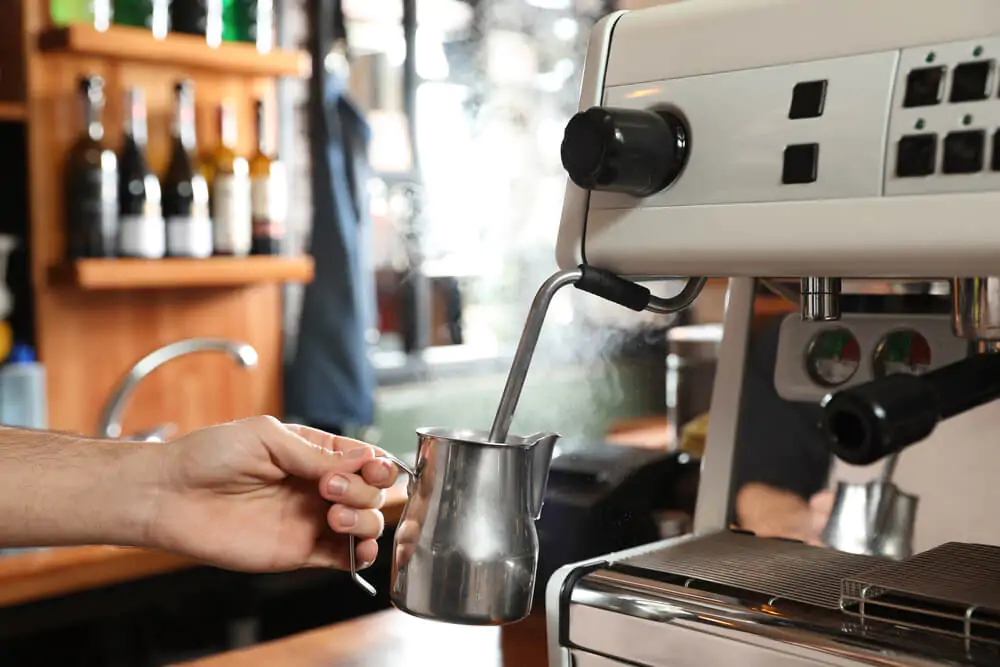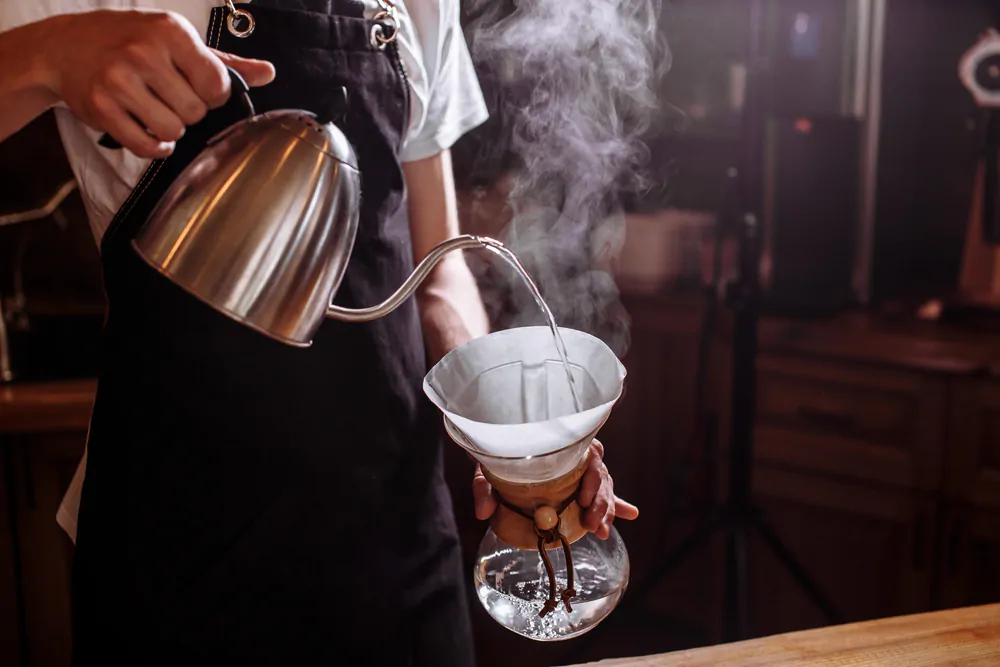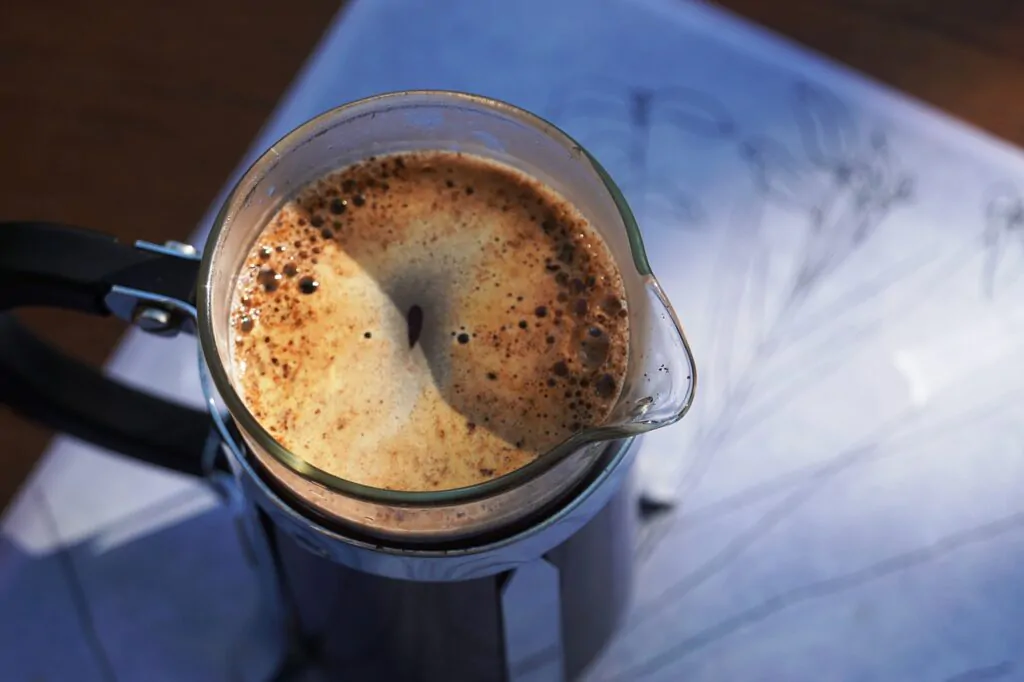Does humidity affect milk frothing when steaming milk for coffee drinks?

When we steam milk, we generally do so indoors at temperatures and humidities comfortable for humans.
If you want to steam milk in a laboratory environment where conditions change constantly, then, by all means, go ahead: it would be interesting to know if it plays a role and does humidity affects milk frothing.
What is Humidity?
The amount of water vapor in the air is called humidity. When water is present in the air, it evaporates very easily and quickly; evaporation cools down (or humidifies) the surrounding environment. Higher humidity is often found outdoors when it rains or snows because then more water makes its way into the atmosphere through evaporation from lakes and oceans.
The temperature significantly impacts how vigorously this process occurs: at high temperatures – say over 140 F / 60 C – evaporation happens very rapidly. You may recall that you feel drier if you step outside during a heatwave—that’s why: the hot air sucks more moisture out of your skin faster than at lower temperatures.
The Role of Humidity in Coffee

In coffee, the role of humidity is even more pronounced because we are working with water and steam. Water has a far more significant impact on developing flavor compounds in coffee when involved in vapor phase transport rather than liquid phase transport.
Vaporization heats any surrounding liquid because it removes latent heat from it, which can only happen at a lower temperature. An example of how this works would be heating an oven by eliminating meat from inside; after opening the door, you can feel a gust of hot air).
In addition, mixing water molecules into vapor frees them from each other, so they become mobile again; as vapor molecules move around, they collide with neighboring ones and do not remain just precisely where you put them. Instead, they move, and over time they settle in different areas, so flavors redistribute among brewed coffee grounds.
Given these facts, if you want to produce a consistent extraction of flavor compounds from the coffee into the liquid phase (usually water), it is vital to have as little vapor phase transport occurs concurrently.

If there are many steam bubbles created during brewing—due to high water content or temperature—that will cause more evaporation to happen rapidly and unevenly. As a result, water molecules will leave their comfort zone and then go back again in a staggered fashion, making it difficult for all compounds to taste equal when aromas end up smelling differently.
Hence, good baristas balance their pouring technique against ambient humidity levels: when humidity is high, they reduce the water content of their shots. If it’s low, they add more so that all compounds end up roughly the same place when a beverage is tasted later on.
Of course, the ideal situation is to produce as few steam bubbles as possible during steaming and make sure that evaporation happens at a slower rate.
Lab Conditions

Suppose you want to test how temperature and humidity affect milk steaming in an artificial environment. In that case, this can be done relatively quickly if you have a laboratory setup that allows you to control temperature and moisture levels precisely.
A simple way to simulate different conditions is by using a test tube with a stopper. Place your milk in the test tube, warm it to a temperature you want to experiment with (say 93 o F / 34 oC), and then keep that exact temperature constant by placing the whole assembly in a water bath. Keep the water at different levels of humidity while allowing evaporation to occur gradually.
If you have an accurate thermometer and hygrometer, then this can be done very precisely. If not, you might end up having to guess at some values since it’s hard for most people to distinguish between higher degrees of relative humidity (RH) just by looking at them without any measurements taken.
What Might Affect Milk Frothing?
Once you’ve obtained data and created graphs for various temperatures and humidity levels, you’ll now have to start doing some thinking.
Assume for a moment that beer foam—the stuff on top of your glass of stout or lager—works exactly like milk foam: if you keep raising the temperature and keeping humidity at a constant level, will bubble grow larger or smaller?
And if they grow smaller upon increasing temperature, is this due to more evaporation happening faster (as in our comparison above), or does it simply require less energy input so there’s no need for as much steam production because less heat needs to be removed from the liquid surface area?
For some reason, coffee professionals seem to believe that higher temperatures lead to smaller bubbles. I’ve heard many baristas say that the best lattes are made right before closing time when milk is warmest.
I’ve also heard pastry chefs say that they always use their most expensive chocolate couverture for desserts because it creates smaller air bubbles in ice cream when cooked at higher temperatures (you can see this with a magnifying glass).
